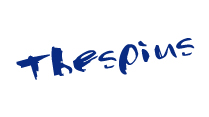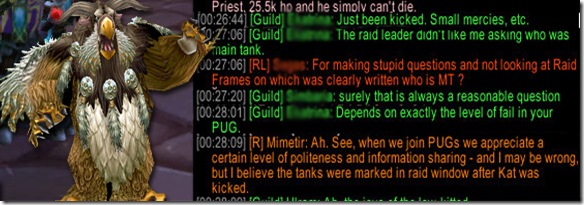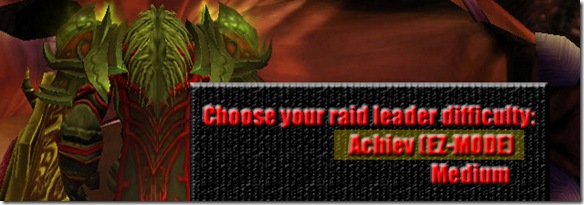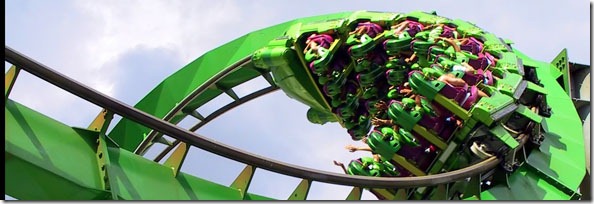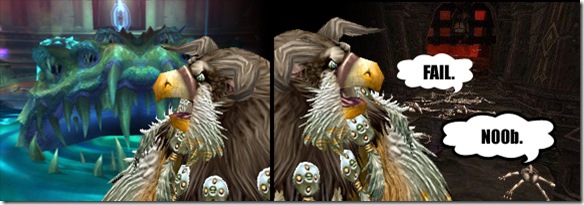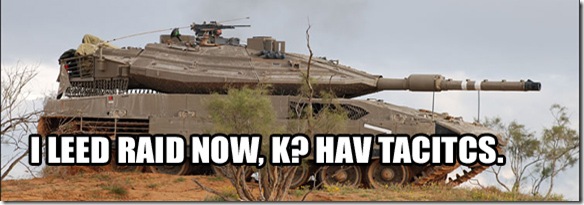
Raiding can always be stressful. Although the content has been called “too easy”, some of us still struggle with certain encounters. We’ve cut our teeth on Normal Modes, and make the step up to the Heroic. Haunting are the nights of banging our heads against Icehowl cause one raid member is just a little slow on getting out of the way. We shake our heads in disgrace because a DPS class is too used to “being carried” when we try Yogg+Anything. Raid nights get called early, curses ensue, and it’s just not a pretty sight.
Whether it’s in raid or out of raid, I firmly believe it’s essential to insert breaks and morale boosters. And by breaks, I don’t mean “Take 5 for bio and beer.” I mean something active. A couple examples:
In-Raid
Trivia Games
Kalheim, a feisty paladin in my guild, holds trivia games during downtimes in the raid. While waiting for invites to go out or waiting for that last member to come back from an AFK or bio break, he puts up topic-centered questions for us to compete for the fastest answer. These quizzes will encompass a variety of topics, usually gaming-based. He pulls out Classic WoW Lore, the names of BC Boss spells, Super Mario trivia, and even gaming company trivia.
You can reward your raiders with anything you want. A gem, some gold, free flask/food, whatever you want. The key is simply to make the questions challenging but not impossible. A topic or genre you and your guild talk about often; you can include everyone.
The Whipping Boy
First off, this is pretty much a voluntary position. In no way do you want to ostracize one of your raiders who cannot take the brunt of it. In our guild, this whipping post has a name, and that name is Zabos. He’s an incredibly likeable guy, but he’s really easy to tease. He can take it, because as a player, he’s really good at what he does. He’s one of our officers, and talks a lot of smack, so the guild will lay it on pretty thick. The guild has built up a tradition (before my arrival) of /gkick’ing Zabos out of the guild when a new boss goes down. It adds an extra level of fun to progression and cohesiveness of a guild. The phrase “Shut up Zabos!” gets passed around a lot. It just makes me laugh.
Random, Off-the-wall “Attempt”
This should explain itself. After a long night of progression, you need a break. Something to make you laugh or wake you up. We specifically have a Morale Officer in our guild, Shenweh, who is responsible for making sure everyone is in good spirits. When things are getting tense or tired, it’s her job to create little fun events like this:
Out of Raid
Actual Alt Dungeons
I have several alts at a variety of levels, and I have some real life friends that all stick together. They play super casually–usually only once each week, if at all. Although I have two 80s, their level 45 character is their highest. The other night, we managed to get all five of us on together to do a run of Uldaman. There was no run-through, there was no level 80 to accompany us. Because the healer and our hunter were lower than the rest of us, we really had a chance to take advantage of crowd control and focus-firing. Since they’re all new to the game, it was a great chance for me to be able to show them a fragment of what makes this game so great for me. I hope that at some point they may be able to step into a weekend/off-night raid with me. Here, I lay the groundwork. =)
If you have friends that are trying to learn the game, take the time to actually play it with them. I know how much that means to both people. It also gives you a little break, and a little time to relax.
Arenas/Battlegrounds
In my opinion, always have at least one person you know well to go on this adventure with. Arenas can sometimes be a great way to get out some frustration (if they go well). If you turn off the Battleground Chat in a Warsong Gulch or Arathi Basin, they can actually be pretty fun with a group of your friends.
Achievements/Holidays
Blizzard has given us this interesting little outlet to occupy our time when we’re not raiding. Even little mindless ones involving pets or an Azeroth raid can be entertaining enough to ease your mind. See if any of your guildmates have never seen AQ40 (I just had my first encounter before writing this). If there’s a slew that have never been inside, show them around! Especially if you’re in a leadership position, this shows your raiders that you’re invested in how much everyone’s enjoying the game. Gotten all the achievements you want/need? Then just tag along for your friends’ benefit. Share funny stories. Reminisce about things that happened in those old raids.
———-
You can decide to do these on raid nights or outside of your standard schedule. Think of it this way. Although this game as fun, you want to avoid having progression start to kill your soul after a while.
What sort of things do you do in order to keep your raid’s morale high? What do you do, as a player, to detox in-game?
